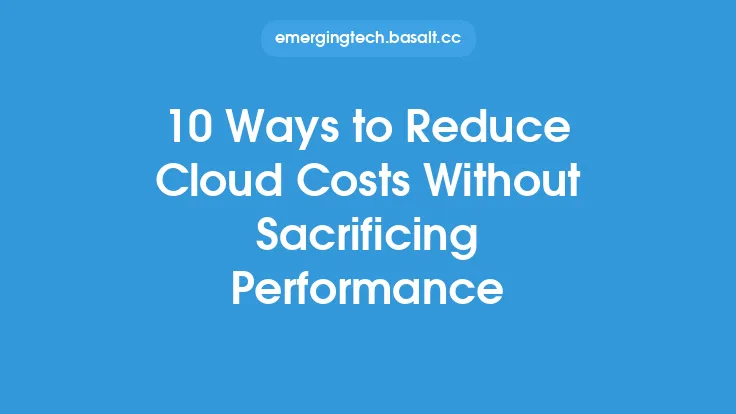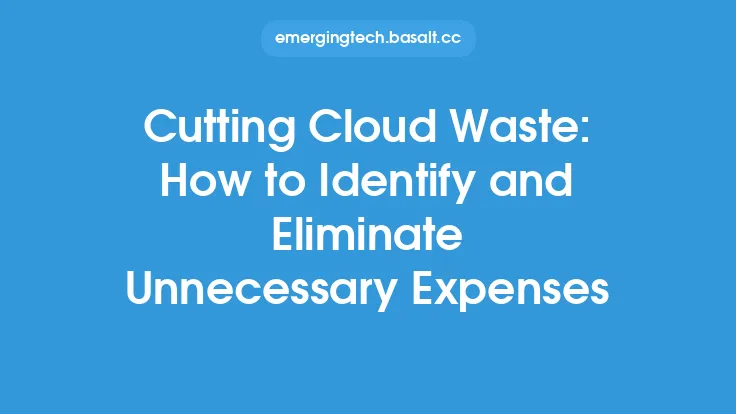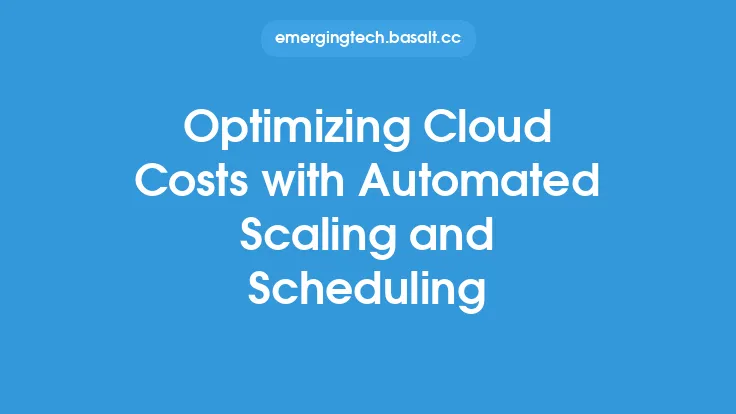Cloud computing has revolutionized the way businesses operate, providing scalability, flexibility, and cost-effectiveness. However, as cloud adoption continues to grow, so do the costs associated with it. One of the most significant challenges faced by organizations is optimizing their cloud expenses without compromising on performance. Two effective strategies for reducing cloud costs are Reserved Instances (RIs) and Spot Instances (SIs). In this article, we will delve into the details of these two pricing models, exploring how they can help organizations minimize their cloud expenditure.
Introduction to Reserved Instances
Reserved Instances are a type of pricing model offered by cloud providers, such as Amazon Web Services (AWS), Microsoft Azure, and Google Cloud Platform (GCP). With RIs, customers can reserve a specific amount of compute resources, such as virtual machines or instances, for a predetermined period, typically one or three years. In exchange for this commitment, customers receive a significant discount on the hourly rate compared to On-Demand Instances. The discount can range from 30% to 75%, depending on the cloud provider, instance type, and region.
RIs are suitable for workloads that have a steady, predictable demand, such as web servers, databases, or applications with consistent traffic. By reserving instances, organizations can ensure that their resources are always available, while also reducing their costs. There are different types of RIs, including:
- Standard RIs: These are the most common type of RI and offer a fixed discount for a specific instance type and region.
- Convertible RIs: These RIs provide more flexibility, allowing customers to change the instance type, region, or operating system during the reservation period.
- Scheduled RIs: These RIs are available for a specific time period, such as during business hours, and can be used to reduce costs for workloads with predictable schedules.
Introduction to Spot Instances
Spot Instances are another pricing model offered by cloud providers, which allows customers to bid on unused compute resources. The price of SIs is determined by supply and demand, and customers can bid on instances at a price they are willing to pay. If the bid price is higher than the current market price, the customer is allocated the instance. However, if the market price exceeds the bid price, the instance is terminated, and the customer must rebid to continue using it.
SIs are suitable for workloads that are flexible, fault-tolerant, and can handle interruptions, such as batch processing, data processing, or stateless web applications. By using SIs, organizations can significantly reduce their costs, often by 70% to 90% compared to On-Demand Instances. However, SIs require more management and monitoring, as customers need to ensure that their workloads can handle the potential interruptions.
Benefits of Reserved Instances and Spot Instances
Both RIs and SIs offer significant benefits for organizations looking to reduce their cloud costs. Some of the key advantages include:
- Cost savings: RIs and SIs can provide substantial discounts compared to On-Demand Instances, helping organizations minimize their cloud expenditure.
- Predictable costs: With RIs, customers can predict their costs for a specific period, making it easier to budget and plan for the future.
- Flexibility: SIs offer flexibility, allowing customers to bid on instances at a price they are willing to pay, and terminate or rebid as needed.
- Scalability: Both RIs and SIs enable organizations to scale their resources up or down, depending on their workload demands.
Best Practices for Using Reserved Instances and Spot Instances
To get the most out of RIs and SIs, organizations should follow best practices, such as:
- Monitoring usage: Regularly monitor instance usage to ensure that RIs are being utilized effectively and SIs are not being terminated unexpectedly.
- Right-sizing: Ensure that instances are right-sized for the workload, to avoid over-provisioning or under-provisioning resources.
- Diversifying: Diversify instance types and regions to minimize the risk of interruptions and ensure that workloads can be migrated to different instances if needed.
- Automating: Automate instance management, such as launching, terminating, or rebidding, to minimize manual effort and ensure that workloads are always running efficiently.
Technical Considerations
When using RIs and SIs, organizations should consider technical factors, such as:
- Instance types: Choose instance types that match the workload requirements, taking into account factors such as CPU, memory, and storage.
- Region selection: Select regions that are closest to the users or data centers, to minimize latency and ensure optimal performance.
- Networking: Ensure that instances are properly configured for networking, including security groups, subnets, and routing.
- Storage: Choose the right storage options, such as block storage or object storage, depending on the workload requirements.
Conclusion
Reserved Instances and Spot Instances are two effective strategies for reducing cloud costs, offering significant discounts and flexibility for organizations. By understanding the benefits and best practices for using RIs and SIs, organizations can optimize their cloud expenses, improve scalability, and increase agility. As cloud adoption continues to grow, it is essential for organizations to explore these pricing models and leverage them to minimize their cloud expenditure, while ensuring that their workloads are always running efficiently and effectively.





